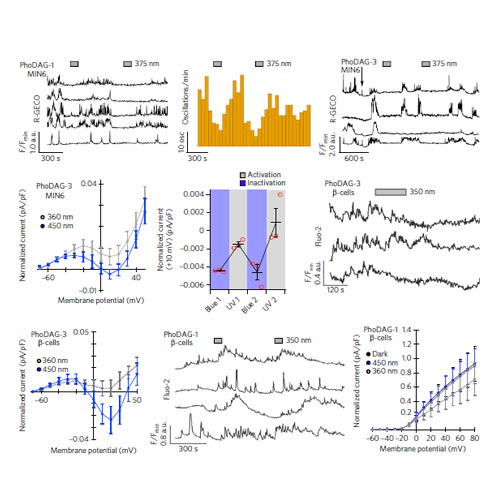Photoswitchable diacylglycerols enable optical control of protein kinase C
25-Jul-2016
Nature Chemical Biology, 12, 755–762, doi:10.1038/nchembio.2141
Nature Chemical Biology, online article
Increased levels of the second messenger lipid diacylglycerol (DAG) induce downstream signaling events including the translocation of C1-domain-containing proteins toward the plasma membrane. Here, we introduce three light-sensitive DAGs, termed PhoDAGs, which feature a photoswitchable acyl chain. The PhoDAGs are inactive in the dark and promote the translocation of proteins that feature C1 domains toward the plasma membrane upon a flash of UV-A light. This effect is quickly reversed after the termination of photostimulation or by irradiation with blue light, permitting the generation of oscillation patterns. Both protein kinase C and Munc13 can thus be put under optical control. PhoDAGs control vesicle release in excitable cells, such as mouse pancreatic islets and hippocampal neurons, and modulate synaptic transmission in Caenorhabditis elegans. As such, the PhoDAGs afford an unprecedented degree of spatiotemporal control and are broadly applicable tools to study DAG signaling.











